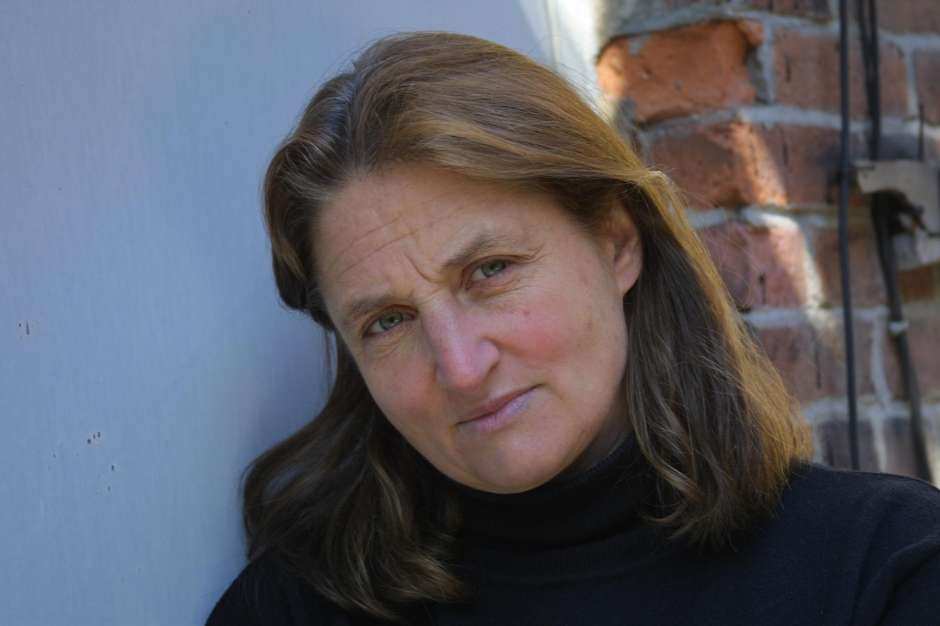| This article originally appeared in the San Francisco Chronicle. In "Mediations," the retrospective of Susan Meiselas' photographs at the San Francisco Museum of Modern Art, there are pictures from 1978 of young Nicaraguan men in Indian dance masks. They have an eerie feel, but we're not looking at a Halloween party. The adolescents were practicing throwing grenades at government soldiers. The masks were a disguise to avoid detection. Those war images became well-known, as Meiselas built her name as an observer of a movement that defied U.S. influence in Central America in the late 1970s. Her signature image, "Molotov Man," was in the heroic Che Guevara vein — a guerrilla with a beret and a rifle preparing to hurl a Molotov cocktail made from a Pepsi bottle. Time magazine included it in its "100 Photos" project of "the most influential images of all time." The Sandinistas' rise provided drama for Meiselas, now 70, but her pictures from more than 40 years of witnessing conflict and cultures are evidence that there was plenty for her to observe before and after those years in Nicaragua. "I think what you'll see in the show is a constant revisiting of history, she said. "It's not just a romantic return, it's a continuous interrogation, and what it means to photograph in a moment of time, and see that time reflected over time." The exhibition, which runs through Oct. 21, is organized in sections, represented as notebooks in the show's catalog. One section is "Carnival Strippers," pictures from the summers of 1972 to 1975, when Meiselas photographed young women who performed in what she called "girl shows" at county fairs and carnivals around New England. "When we think about the sex industry, a lot has happened since then. It was a very innocent period, but there it was," she said, "I certainly had questions as a young woman of that period, about the publicness of their display and the private world that was hidden from the public, and the power dynamic that was being displayed." This was a crucial time for her, Meiselas said, "It shaped the path that followed in many ways. It gave me the sense that there was a role to being a photographer." "The way I chose to work with 'Carnival Strippers' shifted and anchored me in an approach that connected me to people, capturing their words and their perspectives," she recalled. "That was essential to what has unfolded since. And, immediately, it just felt right."  Photo: Susan Meiselas After witnessing uprisings in Nicaragua and El Salvador, Meiselas shifted her focus to other parts of the world, especially to Kurdistan. She spent decades documenting the persecution of Kurds in Iraq and Turkey, and tracking the mass immigration of that population to Europe and beyond — a refugee crisis years before the current refugee crisis. "That's the richest room in the exhibition" she said, "because it has the layering of time, with photographs that are over a hundred years old, and stories that are contemporary from migrants going into Europe in the last month." We also see Meiselas working in Morocco in pictures called "20 Dirhams or One Photo?" — now part of SFMOMA's collection. The pictures reflect a lesson learned by Meiselas. Women in the Marrakesh market seemed reticent about having their pictures taken. Interviews by Meiselas' team revealed that they just wanted to be paid for the photos. If Meiselas has evolved over 40 years, so have the places where her photographs can be seen. Her pictures once accompanied stories on the cover of the New York Times Magazine. Today the magazines and newspapers where her pictures were published alongside reportage — and were reportage — show far fewer photographs of armed conflict, or have disappeared altogether. "How much of the internet has ended up being the interplay?" she said. "Photography used to be brilliant in bringing us closer to places that we never inhabit. Now the internet has potentially greater reach, but it doesn't necessarily have greater impact." As for books, of which she has a dozen to her name, "there are many more books being published, but much smaller runs." And art museums like SFMOMA, the third stop in the tour of "Mediations" after Barcelona and Paris, tend to be places of comfort rather than conflict. "For a long time, I've worked with museums of different kinds," she said. "The exhibition space is extremely privileged space — I've always been exhibiting, so this isn't a new form for me. The only difference in this show is that it stretches over 40 years of work. What I like about that is that you can really create a space of engagement. "'Carnival Strippers' is going to be in a very small gallery. You're going to have the sound that I captured 40 years ago. You're going to have those voices, and look at the images of some of those people, and it will be as close as I can get to rendering a world on my terms." "I don't emphasize in my mind that this is an art audience," she said. "It's just an audience. I'm more concerned about the integrity of the thinking and if it's coherent enough, that it expresses itself well enough, so that they feel what I felt or hope that they might feel." With the museum show approaching, Meiselas headed back to Nicaragua, revisiting history in a place where former insurgents were facing an insurgency. "I am really trying to be present, and I don't have any plans, there's no specific project, it's really just to be present," she said. David D'Arcy is a New York freelance writer.
This article was originally published in the San Francisco Chronicle. The post Susan Meiselas photography retrospective at SFMOMA appeared first on The Kurdish Project. |
Leave a Comment